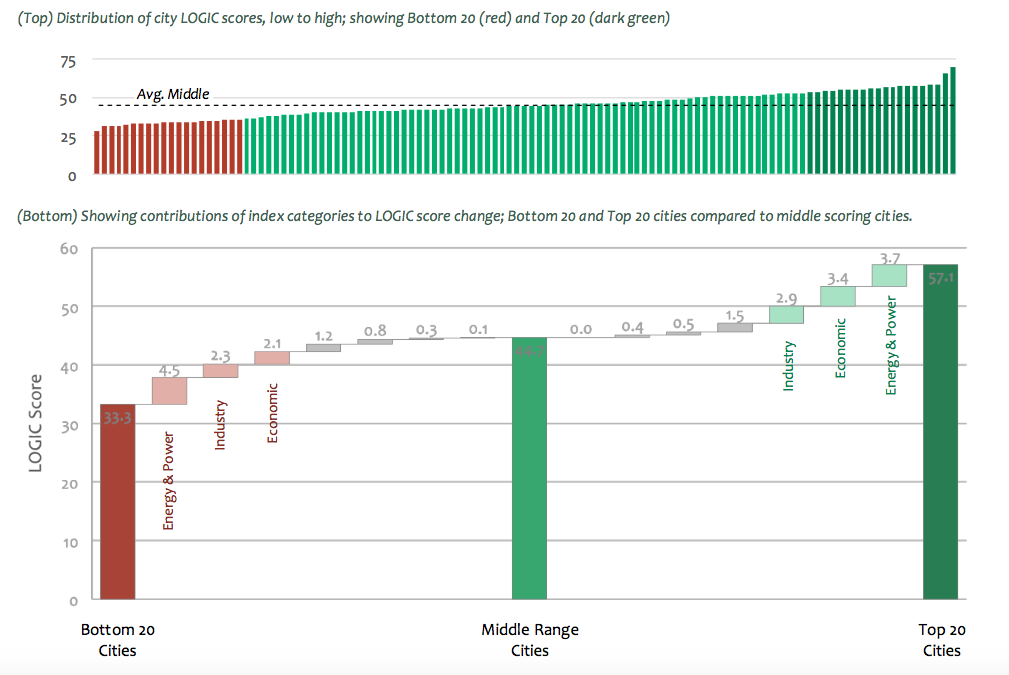LOGIC
China “LOGIC” (“Low-carbon & Green Index for Cities”) is a new city index system designed to measure and inform China’s progress on these goals. It provides a system to track progress, a database to evaluate performance, and an analytical tool to help cities identify improved solutions for low carbon and clean energy development, and early carbon peaking. The research team behind LOGIC gathered a large collection of city-level data on low-carbon development in China – data from 115 cities, across 23 low-carbon and green indicators – to characterize cities across ten economic and demographic dimensions. Data was collected and compared across two annual sets (2010 and 2015).
The full LOGIC report is available for download. We have also created an interactive LOGIC web tool that allows users to explore LOGIC’s many parameters, providing a window into the effects of China’s low carbon policy at the city level.
Going forward, the LOGIC project aims to provide ongoing and timely analysis through two-yearly updates of the city database and city index scores. Additional analysis and special case studies in the near future will help yield more insights and actionable information from the city performance data. Our team is also developing an interactive online tool that gives cities access to LOGIC, enabling them to benchmark their progress, and learn from their peers to identify new, feasible green and low-carbon actions. We hope that policy-makers will use the LOGIC tool to aid their work, and that LOGIC design updates will benefit from feedback based on real world needs and practical experience. Our goal is to help all cities in China transition to a green and low- carbon future.
Policy Mapping
The National Development and Reform Commission (NDRC) has initiated 87 low-carbon pilots in three different batches, which involve a total of 6 provinces, 79 cities and 2 counties. These pilots reflect features of different regions of the country in terms of geographic locations, population size, resource endowments, industrial mixes, and economic growth patterns. Their low-carbon practices can promote low-carbon development in different types of cities through experience sharing, to so make contributions to building China’s low-carbon cities.
With the Policy Mapping tool, iGDP has created a database and interactive platform to track, synthesize and compare low-carbon development policies and actions across regions and cities in China. By identifying publicly available key policies and performance indicators on low-carbon development, the Policy Mapping tool will promote best practices and learning by doing. Policy Mapping will also regularly issue a series of Policy Progress Fact Sheets and Regional Low-carbon Development Performance Reports.



